Histotechnology - Lecture notes 2 PDF

| Title | Histotechnology - Lecture notes 2 |
|---|---|
| Author | Dannielle Grace Cua |
| Course | Medical Technology |
| Institution | Our Lady of Fatima University |
| Pages | 6 |
| File Size | 58.6 KB |
| File Type | |
| Total Downloads | 89 |
| Total Views | 121 |
Summary
Lecture happened last 2013...
Description
Histotechnology & Histopathologic Techniques Histotechnology Is the art and science performed by the histotechnologist to produce a tissue section of good quality that will enable the pathologist to diagnose the presence or absence of disease. Histopathologic Technique Involves different procedures that have been adopted for the preparation of materials and tissue for microscopic examination What are the steps under to this complex process??? NFD CWEB TSS Mola Numbering Fixation Dehydration Clearing Wax Impregnation Embedding Blocking Trimming Sectioning Staining Mounting Labelling NUMBERING of the specimen • Properly filled up Pathology Request Included are Physical History, Physical Laboratory, and Imaging findings, the Pre and the Post Operative findings • Accessioning Procedure Medtech performing this task must be trained to pay the most scrupulous attention to the accurate and ambiguous identification of the sample that will be transferred directly into the database. Receptionist - Unlabeled specimens are absolutely unacceptable for accessioning
- Incomplete specimen based on the request form Barcoding is part of the advancement in the laboratory Basic information needed: Date and time of receiving the specimen clue to pathologist Name of the patient Specimen number C= cytology spec., A= autopsy spec., S= surgical spec. Example: S-16-0111 Source of Specimen Bilateral organs FIXATION Primary Aim: to preserve morphology & chemical integrity of tissue Secondary Aim: slightly harden tissue Definition: -clasically defined as the killing, penetration, and hardening of tissues. -Currently defined as the alteration of tissues by stabilizing protein so that the tissues become resistant to further changes. -Involves cross linking of amino acids THE EFFECTS OF FIXATIVES -inhibit bacterial growth/reduce the risk of infections -act as mordant or accentuator THE EFFECTS OF FIXATIVES -inhibit bacterial growth/reduce the risk of infections -act as mordant or accentuator -change the soluble contents of cells into insoluble structures (otherwise be lost during subsequent processing) -it stabilize the structures to maintain the proper relationship of cells and their stroma (either collagen, reticulin, elastin, or amorphous substance) -it also affects the refractive index (defined as the ratio of velocity of light in air to the velocity of light in a liquid or solid medium)
Characteristics of a Good Fixatives -kills the cell quickly with minimum distortion -permits rapid and even penetration of tissues -slightly harden tissues -permits subsequent application of staining procedures
Factors involved in Fixation 1. Hydrogen Ion Concentration 2. Temperature 3. Thickness of Section 4. Osmolality 5. Concentration 6. Penetration 7. Volume 8. Exposure Different Types of Fixative TYPES OF FIXATIVE ACCORDING TO Micro anatomic fixative -10% formol saline -10% NBF -Heidenhain's Susa -Formol sublimate -Brasil Solution -Zenkers Solution -Bouins solution
TYPES OF FIXATIVE ACCORDING TO COMPOSITIONS Simple fixative Compound Fixative
Other types of Fixatives Additive Fixatives -They chemically alter the tissue by bonding with it and adding themselves to the tissue. Examples: formaldehyde mercuric chloride, chromium trioxide, picric acid, glutaraldehyde, osmium tetroxide, zinc sulfate or chloride. Non-Additive Fixatives -Act on a tissue without chemically combining with it. -They act by dissociating water from the tissue protein groups causing shrinkage and hardening of the tissue if overfixation occurs. Other types of Fixatives • Coagulant Fixatives - Act by creating a network that allows solution to readily penetrate the interior of the tissue. Examples: zinc salts, mercuric chloride, picric acid, ethyl alcohol, methyl alcohol, and acetone. Non-Coagulant Fixatives -Create a gel that makes it difficult to penetrate by subsequent solutions Consequences of Delayed, Incomplete, or Poor Fixation -Loss or total disappearance of nuclear chromatin -Disappearance of some cells (e.g., epithelial DSC cells in intestinal specimens) -Cell shrinkage with artifactual space around the cells. WHAT ARE THE EFFECTS OF FIXATIVES? 1. harden soft & friable tissues 2. makes cell resistant to damage and distortion 3. inhibit bacterial growth 4. facilitates optical differentiation of cell and tissue components 5. act as mordant or accentuator 6. reduce the risk of infections CHARACTERISTIC OF A GOOD FIXATIVE 1. cheap 2. stable 3. safe to handle
4. kills the cell quickly with minimum distortion 5. inhibits bacterial decomposition and autolysis 6. produce minimum shrinkage of cells 7. permits rapid and even penetration of tissues 8. Isotonic 9. slightly harden tissues 10.permits subsequent application of staining procedures 11. Make cellular components insoluble to hypotonic solutions and render them insensitive to subsequent processing TYPES OF FIXATIVE ACCORDG TO ACTIONS a. Microanatomic fixative -10% formol saline -10% NBF -Heidenhain's susa -Formol sublimate -Zenker's soln -Bouin's sol'n -Brasil solution b. Cytological fixative 1. NUCLEAR-flemmings, carnoy's fixative, bouin's sol'n, newcomer's fluid, heidenhain's susa 2. Cytoplasmic stain-fleming's fluid w/o acetic acid, helly's fluid, formalin with "post-chroming", regaud's or moller's fluid, orth's fluid c. Histochemical fixative 10% formol saline, absolute ethyl alc., acetone, newcomer's fluid TYPES OF FIXATIVE ACCORDING TO COMPOSITIONS Simple fixative -Aldehyde fixatives, -loride, chromate fixatives, lead fixatives) -Metallic fixatives (mercuric chloride, chromate fixates, Lead fixates) -Picric acid, acetone, alcohol. Compound fixatives...
Similar Free PDFs

Lecture notes, lecture 2
- 3 Pages

2 - Lecture notes 2
- 5 Pages

Lecture notes, lecture Chapter 2
- 11 Pages
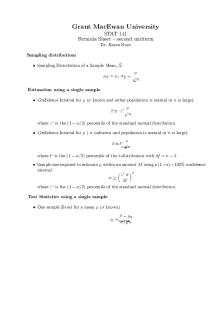
Lecture notes, lecture formula 2
- 1 Pages

2 Biodiversity - Lecture notes 2
- 33 Pages

Chapter 2 - Lecture notes 2
- 30 Pages
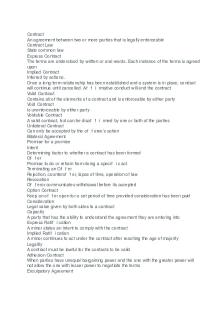
Blaw 2 - Lecture notes 2
- 4 Pages

Chapter 2 - Lecture notes 2
- 4 Pages
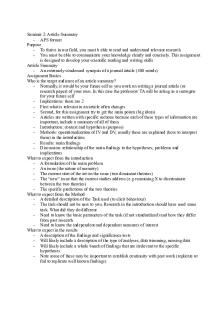
Seminar 2 - Lecture notes 2
- 2 Pages
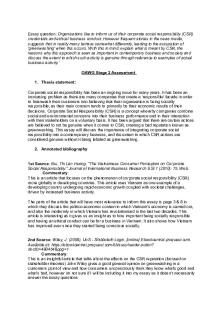
Stage 2 - Lecture notes 2
- 3 Pages
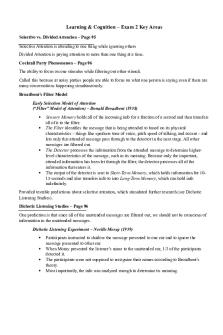
Exam 2 - Lecture notes 2
- 5 Pages
Popular Institutions
- Tinajero National High School - Annex
- Politeknik Caltex Riau
- Yokohama City University
- SGT University
- University of Al-Qadisiyah
- Divine Word College of Vigan
- Techniek College Rotterdam
- Universidade de Santiago
- Universiti Teknologi MARA Cawangan Johor Kampus Pasir Gudang
- Poltekkes Kemenkes Yogyakarta
- Baguio City National High School
- Colegio san marcos
- preparatoria uno
- Centro de Bachillerato Tecnológico Industrial y de Servicios No. 107
- Dalian Maritime University
- Quang Trung Secondary School
- Colegio Tecnológico en Informática
- Corporación Regional de Educación Superior
- Grupo CEDVA
- Dar Al Uloom University
- Centro de Estudios Preuniversitarios de la Universidad Nacional de Ingeniería
- 上智大学
- Aakash International School, Nuna Majara
- San Felipe Neri Catholic School
- Kang Chiao International School - New Taipei City
- Misamis Occidental National High School
- Institución Educativa Escuela Normal Juan Ladrilleros
- Kolehiyo ng Pantukan
- Batanes State College
- Instituto Continental
- Sekolah Menengah Kejuruan Kesehatan Kaltara (Tarakan)
- Colegio de La Inmaculada Concepcion - Cebu




